Föhr: Germany’s hidden gem in the North Sea
The initial plan was not to visit Föhr.
We were keen on visiting the Greek islands. It would be perfect in July. Warmth. Great food. Deep blue waters and whitewashed houses. Fresh fish. Friendly locals. That’s a pretty decent equation for a good holiday. The problem though is that Greece has 6000 islands of which 227 are inhabited. All of these islands, sound impossibly dreamy and beautiful. I go down a rabbit hole that we call the internet for days and emerge confused. I older I grow, the more I enjoy the pathetic excuse of wasting time online researching for holidays. After much deliberation and 20000 google searches later, we have our heart set on a few islands but after trying almost 101 permutations and combinations on Skyscanner, the shortest possible route involves changing flights twice and 17 hours of travel. We could be half way around the world by then.
I started looking closer to home ( Berlin) and suddenly while looking at the map of Germany, my eye gravitates to a tiny group of islands dotted on the border between Germany and Denmark.
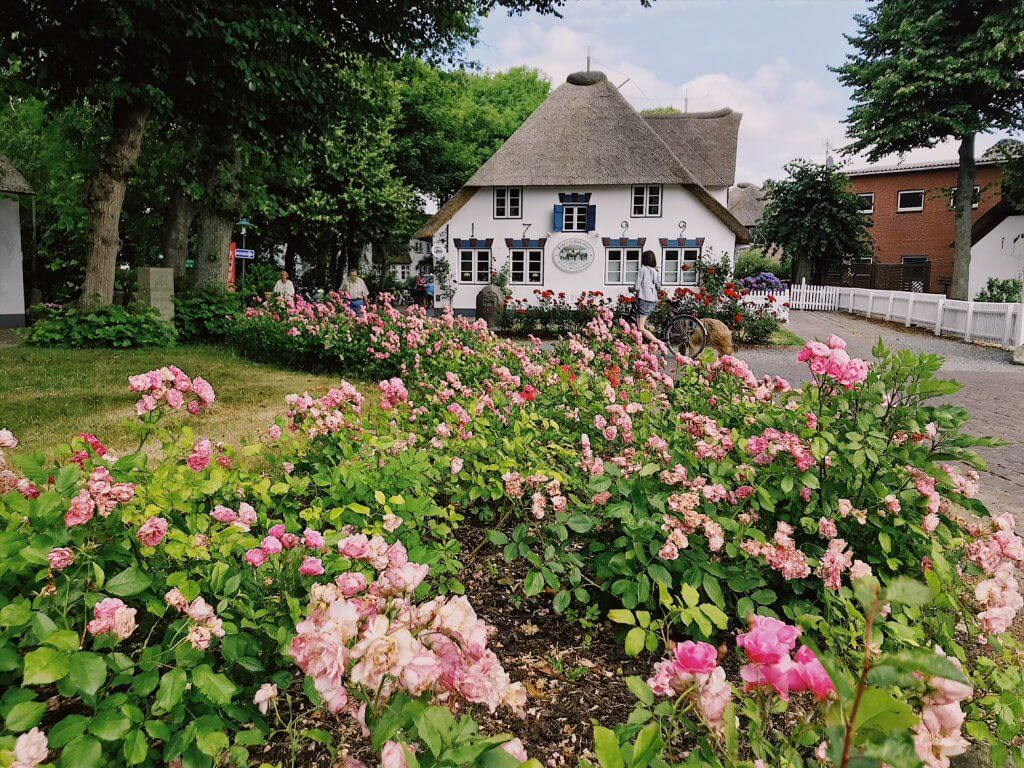
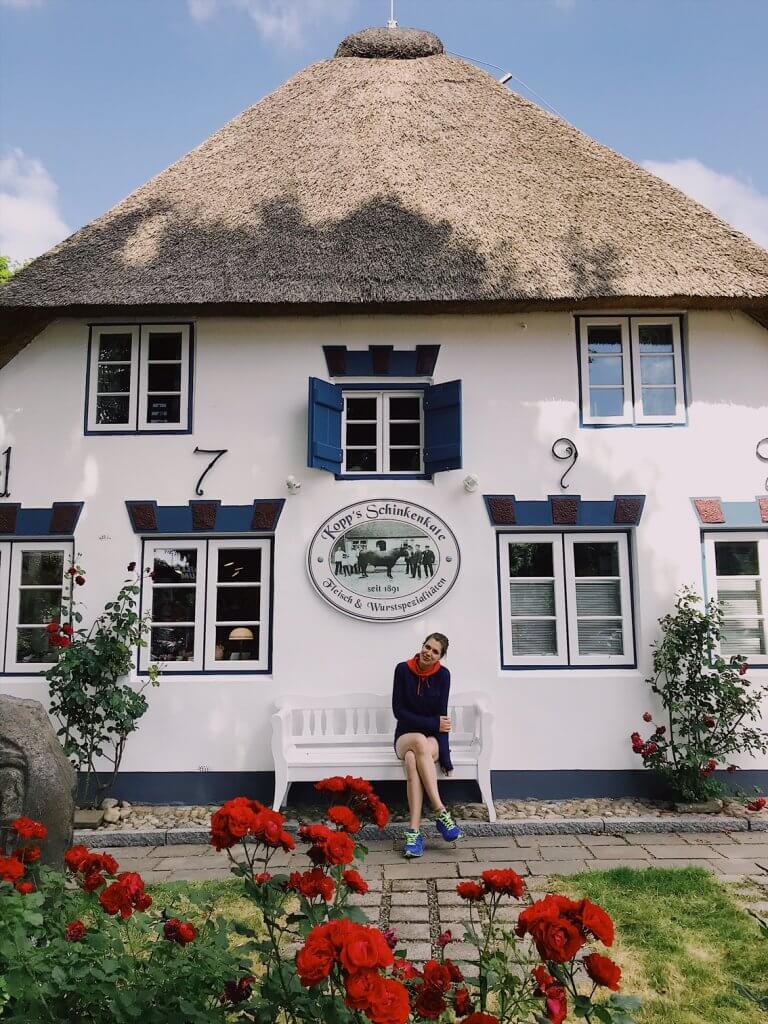
The North Frisian Islands.
Floating in the bristling, turbulent North Sea, these tiny group of islands have a rich and varied history having been ruled at various points of time by the Danes, the Dutch and the Prussians.
While I love the sound of the history of the island, I’m not sold on the idea of holidaying in the North Sea. I’m still scarred from my time living on the east coast of Scotland when huge clouds of dreich grey mist called the haar would drift in suddenly from the North Sea drowning out the daylight like some alien spaceship from outer space.
Maybe the weather would be more favourable on the western fringes of the North Sea. Especially in the summer.
We settled on visiting the quiet, unassuming and more budget friendly Föhr which looked like a far better fit than its brash and more upmarket sister, Sylt.
So that’s how on a late, very fine evening in early July we find ourselves hopping on the hourly ferry service from Dagebull Mole to Föhr.
We reach Dagebull after an eventful 5 hour train journey from Hamburg which involved a hour long break in-between in Husum because of a train driver calling in sick. Still, we are grateful. It is a big change from the days when Hans Christian Anderson used to holiday in Föhr (1844) -it took about four days to reach the island by road from Hamburg.
While passenger cars bore into the belly of the ferry, we climb upstairs to soak in the sun and enjoy the panoramic view of the ferry terminal. Its nothing home to write about. We grab a bench towards the rear of the ferry to soak into the broad expanse of blue sea in front of us. The sea is calm and there’s a gentle breeze blowing in from the sea on which the seagulls slide back and forth into the broad white hull of the ferry. After long mournful bellow, the ferry slowly tugs away from shore into the shimmering golden evening sea. The adventure has begun. I feel a magical and almost therapeutic feeling of leaving land behind and sailing away to the island. All my worries and thoughts are temporarily stored in some invisible black box on land. In an island, surrounded by blue sea on all sides, no fears could harm me, no unhappy thoughts could fester.
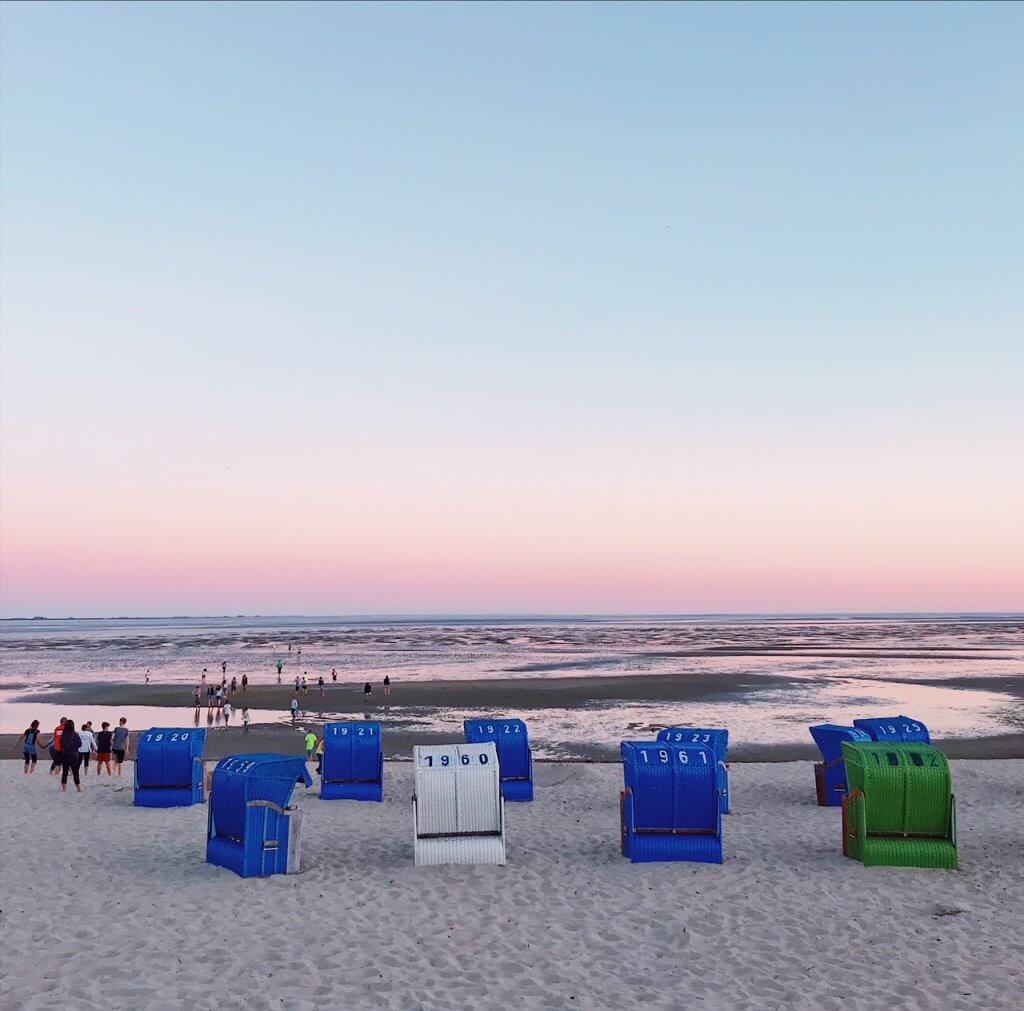
After a pretty serene crossing, the beautiful promenade of Föhr’s main town and transport hub, Wyk Auf Föhr comes into the sight. With over 4500 inhabitants, half of the island’s population resides here and provides a convenient base with plenty of hotels and apartments to choose from.
We stayed for 4 nights in the Jugendherberge Wyk Auf Föhr . Despite being located on the fringe of Wyk Auf Föhr, the proximity of the hostel to the beach is a huge plus. Plus the availability of full board was also a major plus given how expensive we found eating out in Wyk Auf Föhr.
With little or no clue about how far the hostel is from the harbour, we hop on the local bus link that does the loop around all the town before hopping to the other key villages on the island. The driver is friendly and tells us that he will let us know when our stop comes. Few stops later, in front of a huge corn field, the driver drops us off with a cheerful wave. I already have a good feeling about this place. The hostel is huge and in summers mainly caters to huge school groups and families. There’s lot of pimply faced moody teenagers running around. Luckily, we’re housed in the more tranquil west wing of the hostel away from the groups. There’s no wifi in the rooms, only in the reception which initially feels like a bit of a downer. However, the certainty of not getting any wifi in the rooms means I slip into a happy routine of reading a book before bed and sinking into a very blissful, deep sleep.
Back to our first evening in the hostel. After helping ourselves to the generous buffet dinner in the hostel we go for a wee wonder to the nearby beach.
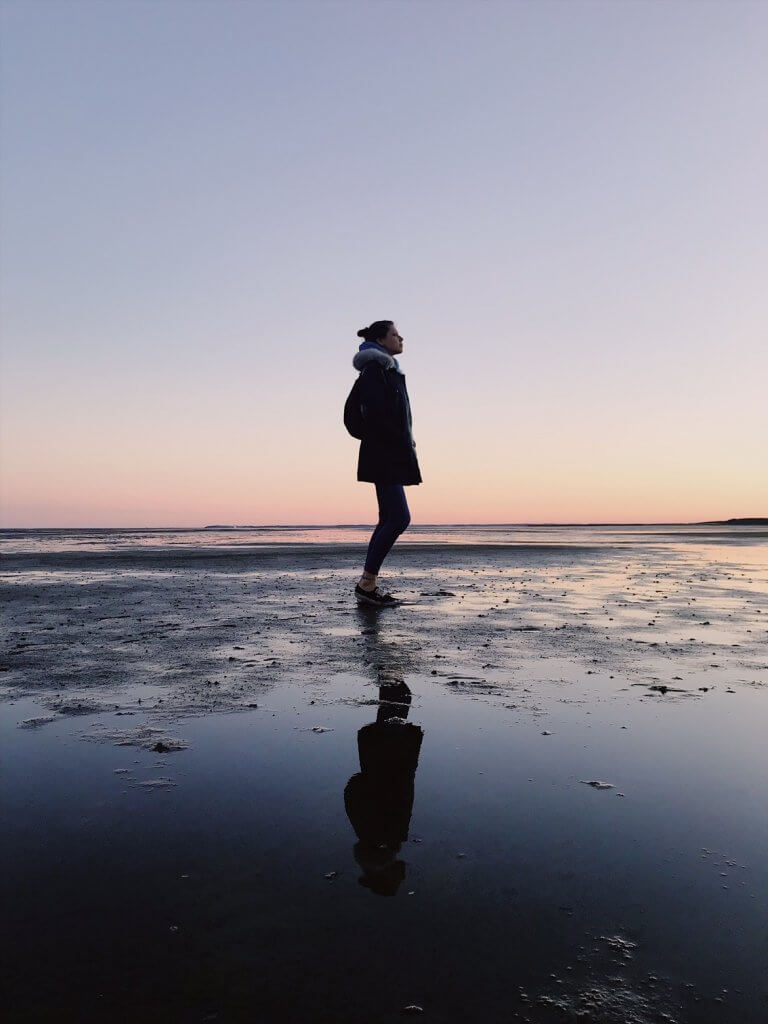
The first few hours in Föhr was the best weather we had for the whole trip. Clear skies as far as your eye stretched. The result : probably one of the most hauntingly beautiful sunsets I’ve ever seen. The sky was slowly turning reddish pink with lots of pale blue hues scattered across its fringes. With the tide receding you have the most unusual sight of these bare mudflats stretching out to sea , in this case all the way to the neighbouring island of Amrum. Little pools of water, still like glass, gaze back into the reddish pink sky creating a dreamy ambience. Seagulls and terns swoop and scavenge for worms and all kinds of juicy morsels left behind by the receding tidal waters. Swallows weaving mysterious patterns across the sky added to the almost ethereal setting. Wow. What a welcome to Föhr.
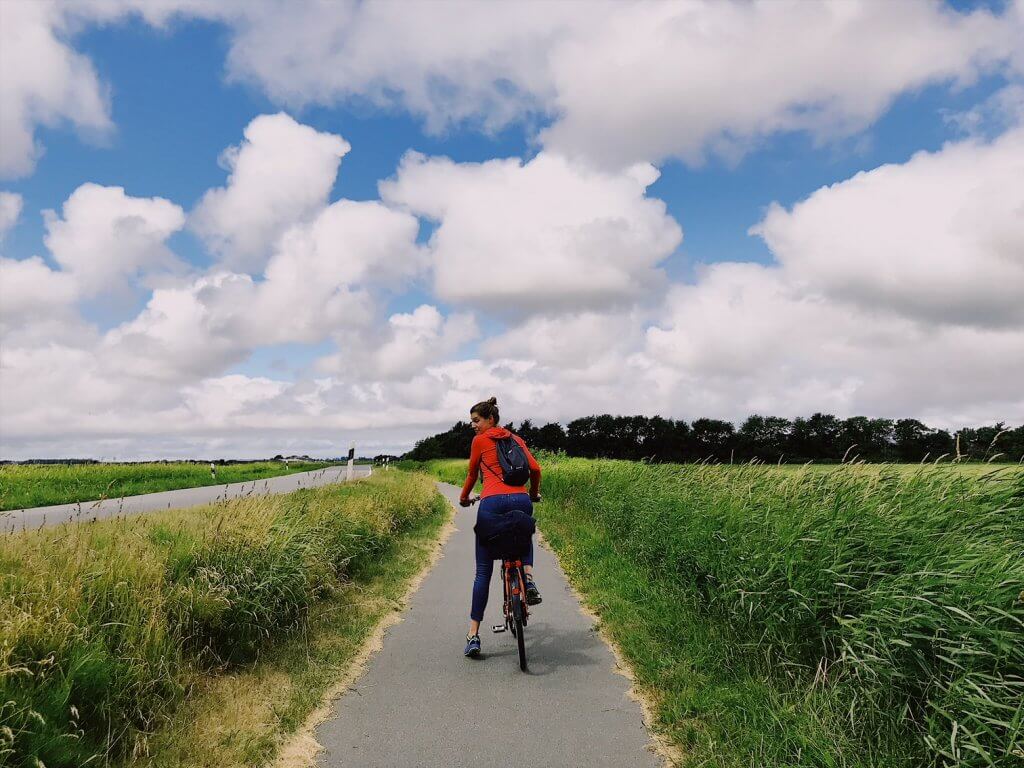
A long stretch of gravel road and an empty blue horizon lies ahead of us as we set out the following day to cycle the 11 odd kms to the northern fringe of the island of Föhr. We’re surrounded mostly by green lush corn fields and the occasional field of golden wheat for most of the ride. Odd tractor, passing by, breaks the silence. As we carve into the stiff wind blowing in from the North Sea we feast our eyes on the dramatic cloud formations blowing in from the North Sea.
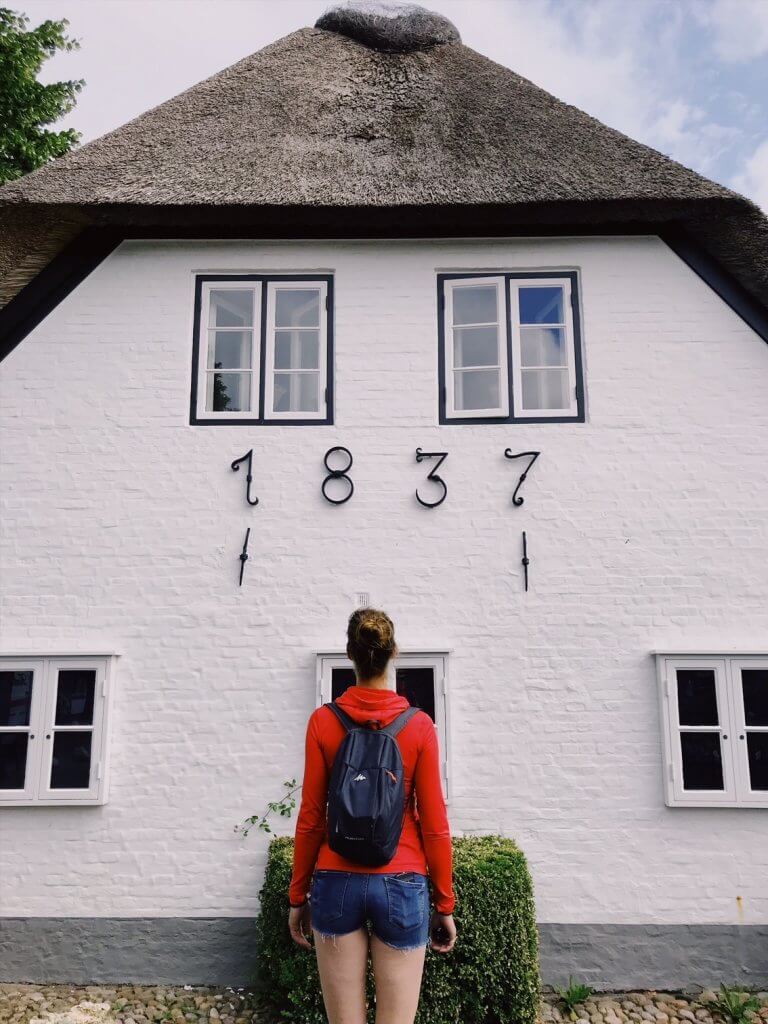
Our first stop was the impossibly beautiful village of Nieblum lined with large leaved linden trees and wild rose trees. If there was a prize for the most beautiful village in Germany, am sure Nieblum would be up there on the final shortlist. One of first things that strikes you about the linden lined lanes of Nieblum are its traditional Frisian houses with straw thatched roofs. I think we must have stopped our bikes an odd dozen times taking pictures of these impossibly beautiful houses. The rich legacy of houses in Nieblum is a reminder of the island’s golden era when in the 17th and 18th centuries, whaling brought islanders work and a lot of wealth. The people of Friesland and Fohr developed a reputation as excellent whaling men. Their captains, boosted by their fruits of their endeavours, built a number of impressive houses in Nieblum which have been perfectly preserved since.
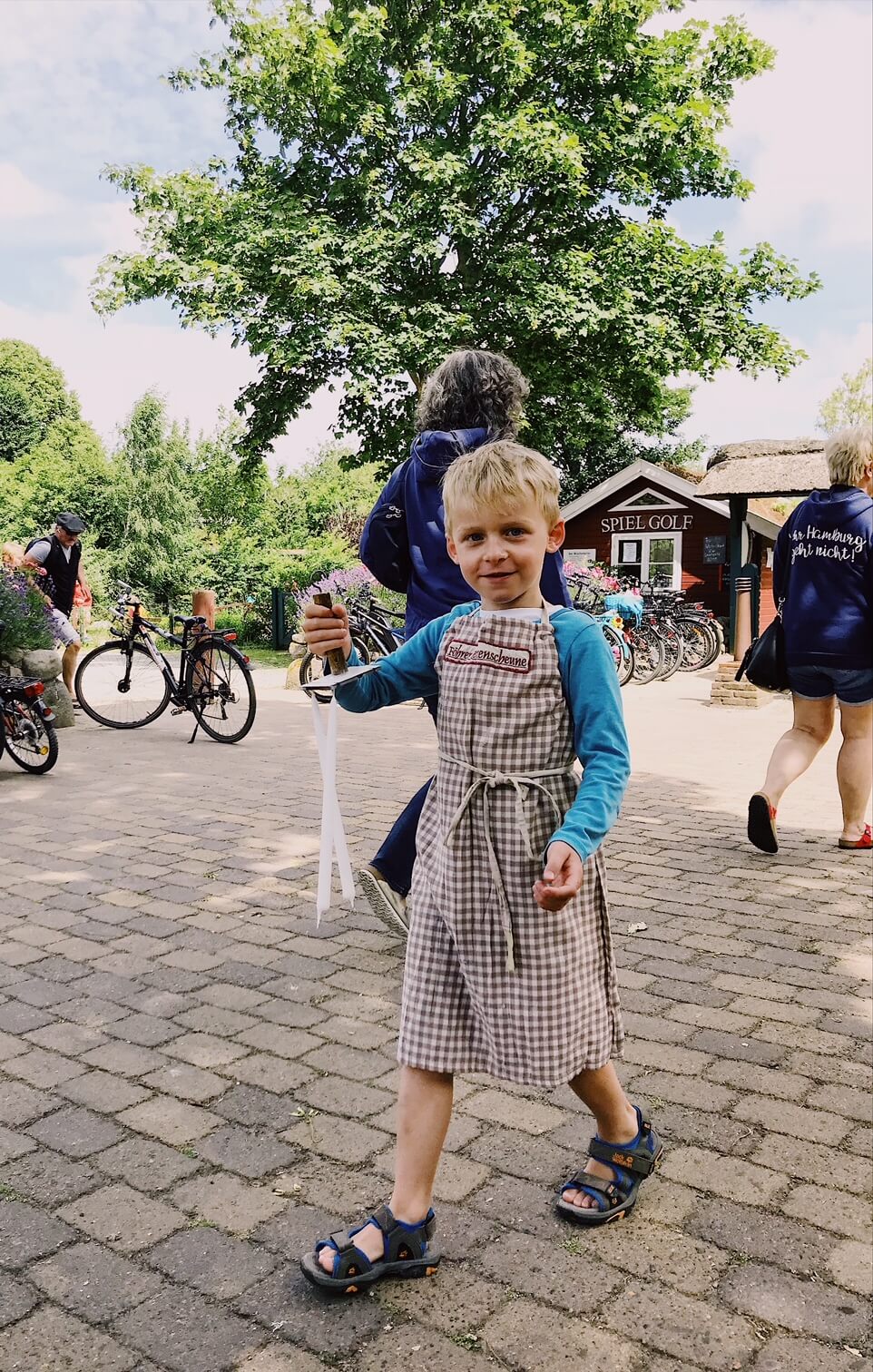
There’s a whole bunch of activities to keep visitors engaged in Nieblum. Besides a pretty decent mini golf course ( 9 holes, €4.50) there is the Föhrer Kerzenscheune where kids can learnt to make their own candles. It is also worth visiting one of the oldest churches in the island here : St John’s.
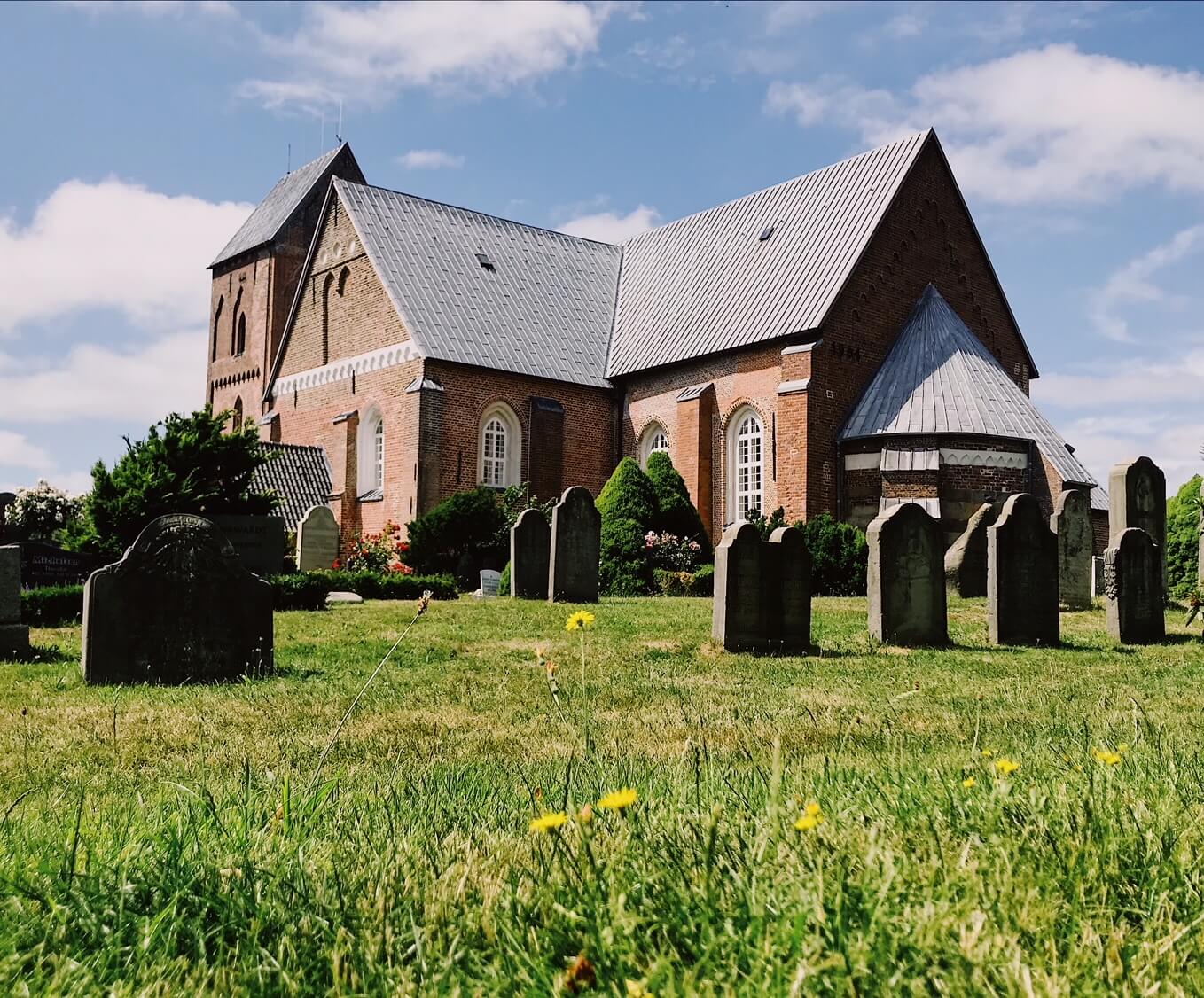
The graveyard here is filled with a number of very ornate, beautifully decorated tombstones that tell the stories of sailors from Nieblum and surrounding places.
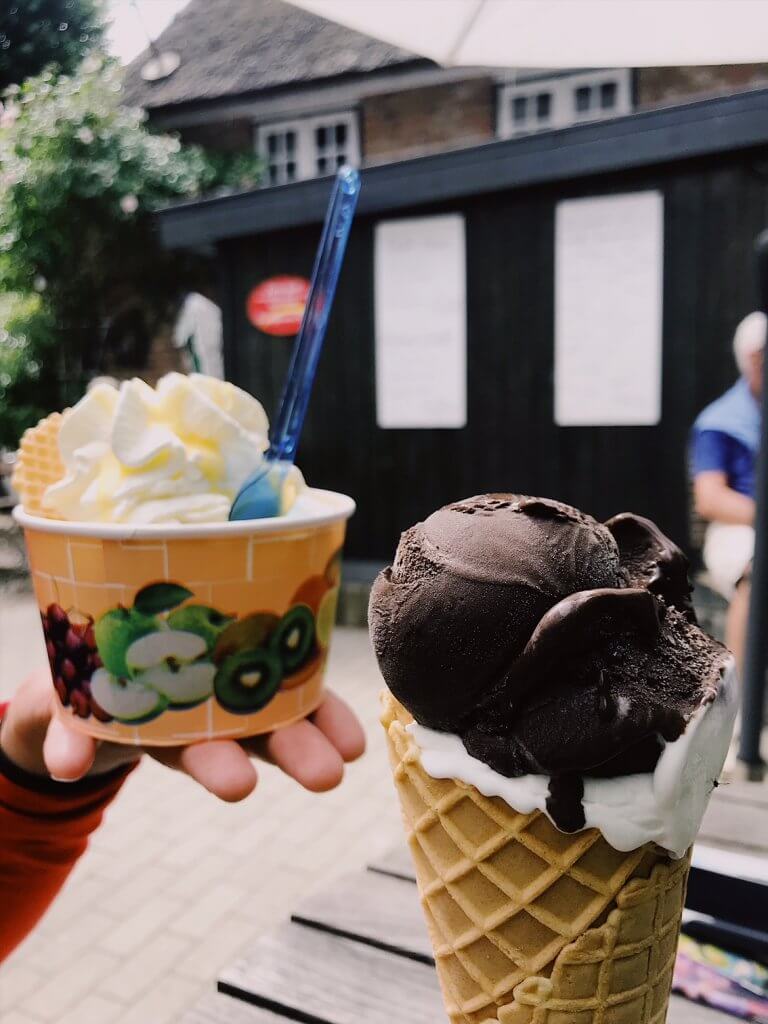
In terms of food and drink, there’s bunch of really good restaurants and bakeries to choose from. We gorged on our packed lunch from the hostel but if you’re on a budget, I highly recommend popping into the local Backer Hansen. Also if you have a sweet tooth, I recommend popping into Cafe Cappuccino for their fantastic gelato and amazing range of toppings. They speak no english so be prepared.
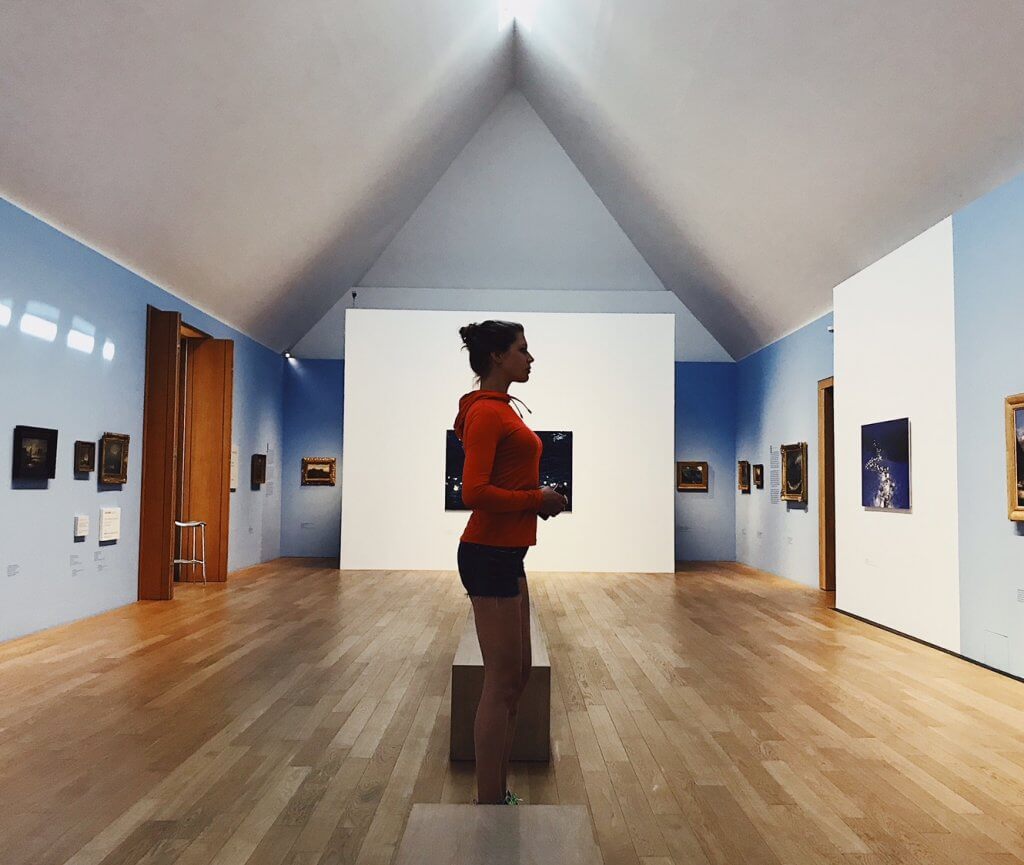
From Nieblum it was a 10 minute bike ride through some beautiful countryside scenery to our next stop, the village of Alkersum where we wanted to visit the Museum Art of the West Coast aka Kunst der Westkuste. Visiting this museum was definitely one of the highlights of our visit to Fohr . We didn’t expect a tiny island like Föhr to have such a well curated and beautifully designed exhibition space. The museum has an excellent collection of works by notable Danish, German, Dutch and Norwegian painters like Anna Ancher, Michael Ancher, Max Beckmann, Peder Severin Krøyer, Max Liebermann, Emil Nolde and Edvard Munch . During our visit there was fantastic exhibition about artists who have painted about Norwegian coastline and this featured works of Emil Nolde and Edvard Munch. There’s a lovely shop, helpful staff plus a really nice onsite cafe and restaurant.
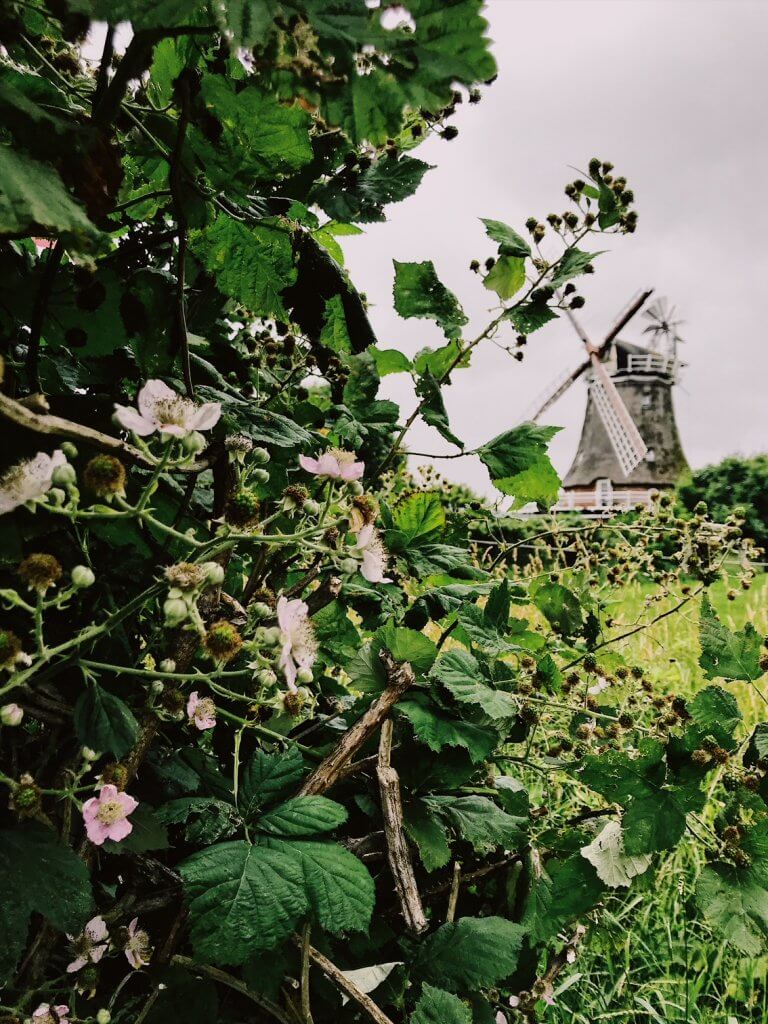
Back on the bike we cruise through the middle belly of the island. More green maize fields and big huge open blue skies stoop below to greet us. After a 20 minute ride, the idyllic village of Oldsum greets us with a curious landmark -a Dutch windmill in Föhr? This ancient thatched windmill apparently dates back to the year 1700 but was burnt down 200 years later, then subsequently rebuilt and was in operation until 1954. The reason we had come to Oldsum was to checkout the small artists commune here. After a couple of wrong turns and asking a few locals for directions we discovered the commune, huddled together in a row of beautiful thatched houses. A few handful of artists welcome us in and we browse a mix of pretty impressive mix of abstract and watercolour paintings that draw on the wild, untamed scenery of the island.
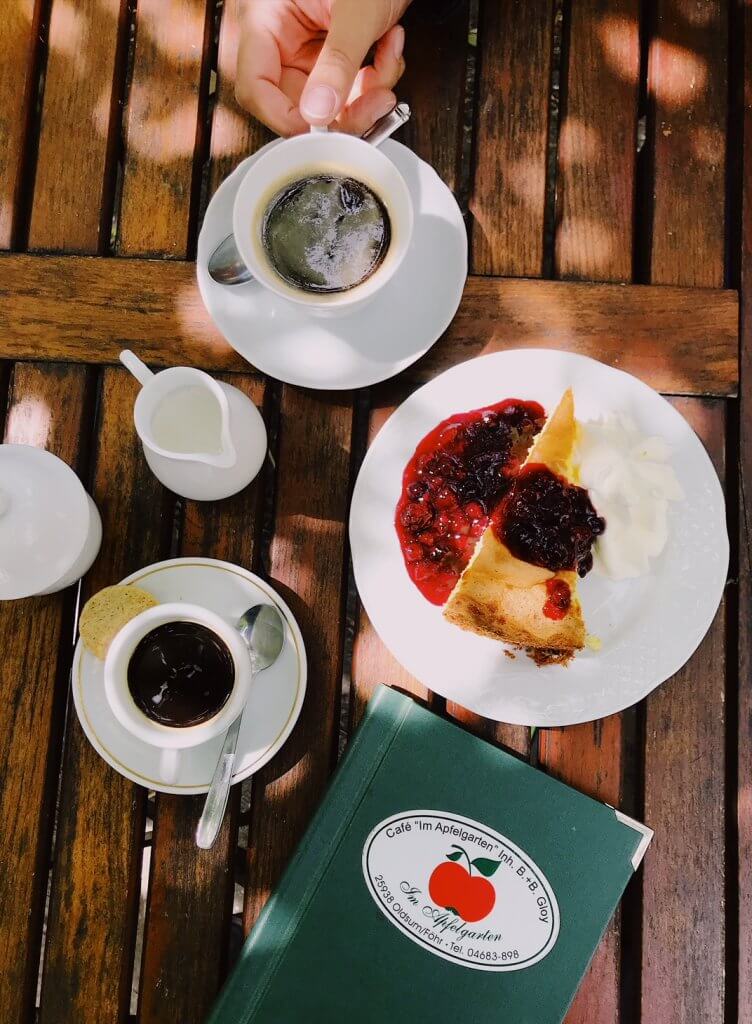
After a wee browse, we drift further through the village and discover the family run Cafe im Apfelgarten. Crowned by a sea of wild pink roses, we discover rustic wooden benches, large tables where locals and tourists gorge on home cooked food and a fantastic range of delicious local cakes that have been prepared using local ingredients from the island. Unsure of what to order, we ask the owners of the cafe for a recommendation. I’m not quite sure what type of cake we were served-it was kind of like a fluffy angel type of cake but I did recognise the lovely red sauce that came with it – Rote Grütze . Quite a brutal name for such a beautiful dessert, the dish originates from the state of Schleswig Holstein and is also popular across the border in Denmark. Made with fresh berries and cherries this dessert is the nostalgic taste of summer in Germany.
Stuffed and sweetened, we reluctantly hop on the bikes and cycle back home to the hostel.
On the last day of Föhr, the clouds drift in and with it comes the moody, unpredictable weather that you traditionally associate with the North Sea.
After the joyless task of repacking and a fond farewell to the staff in the hostel, we checkout and wonder through a drizzle of rain and navigate our way to the harbour of Wyk Auf Föhr. On our way to the harbour one of the few remaining windmills on the island comes into sight. It looks a little unloved but still carries that faded nostalgic beauty that draws you in and makes you wonder what it must have looked like in its pomp. Just like the windmill we had stumbled across in Oldsum, this windmill probably dated back to the late 1800’s when the Dutch used to recruit locals to work on their whaling vessels. The Dutch also left their mark on the island in other ways: the local ‘Fering’ language which is apparently spoken by over 3000 locals on the island is hugely influenced by the Dutch language. Words like ‘kofe’ ( Koffie-Dutch, Coffee-English ) ‘Bak’ ( Bak -Dutch, Wooden Bowl-English ) are examples. Strangely enough ‘Fering’ also features some American English words thanks to the many people that emigrated from Föhr to the United States but kept contact with their relatives on the island. Examples include: ‘Gaabitsch’ – Garbage Can and ‘Sink’
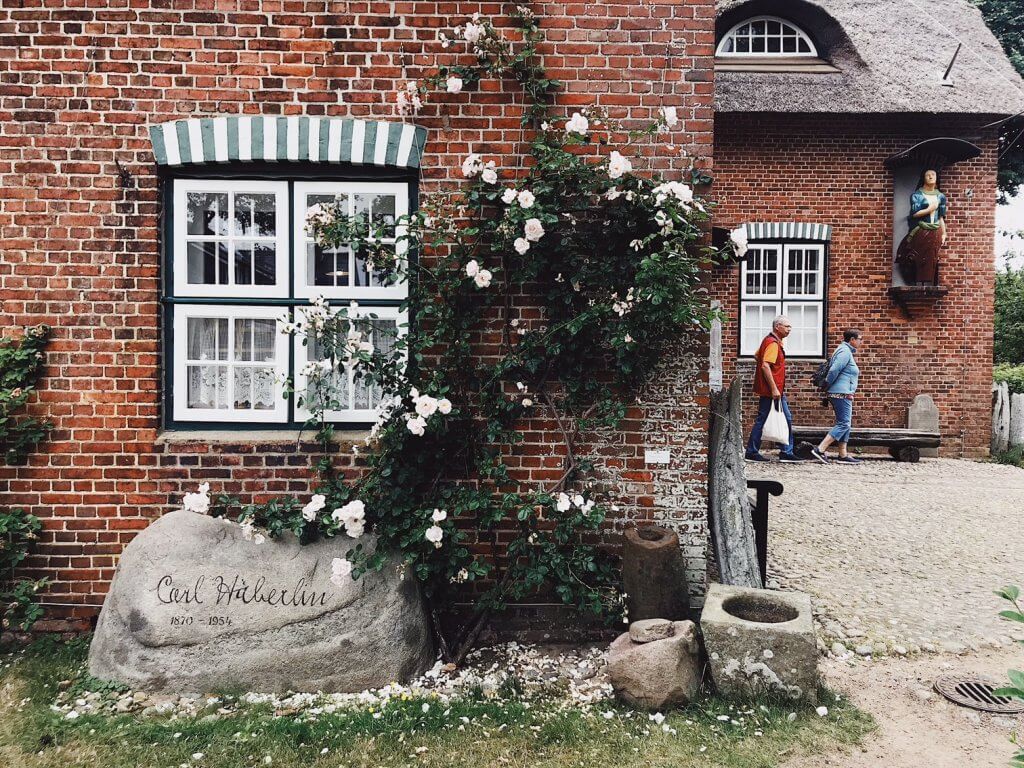
To learn more about the island’s unique connections around the world and its rich tradition of whaling we popped into the fantastic Dr Carl-Haberlin Friesen Museum in town. It is a beautifully designed museum. We spend a fair bit of time learning about the rich maritime tradition of the island, the history of whaling, the great migration to the States during the economic downturn in the mid 19th century and also details of the geology plus rich flora, fauna that inhabit the island.
After, we head back to the harbour where it all began 72 hours ago. In an hour, we’re back on the boat back to Dagebull. Its a bittersweet moment. We grab ourselves a seat on one of the empty Strandkorbs, the iconic roofed wicker beach chairs that are a characteristic feature of the island and across most of the region of Schleswig Holstein. On a day like today when you need to shield yourself from the elements, its perfect. The sea is moody and unpredictable, waves clashing against each other in joyless synchronisation. Then suddenly the clouds part and within minutes the sun rays spear through the dark bundles of clouds. The sea is glistening and the waves roll against each other playfully. The ferry blows its horn, a mournful dirge amidst the cackling of excited seagulls. It time to say goodbye to Föhr and head back to land. Refreshed and rejuvenated, time also to reclaim my invisible black box and set all my worries and thoughts free.
How to reach Föhr
You can reach Wyk Auf Föhr from Hamburg by train ( Journey time around 4-5 hours, Fares start from €27 one way, via GoEuro ) or from Berlin ( Journey time around 6 hours 50 minutes, Fares starts from €40 mark booked via Go Euro )
Where to stay in Fohr
We stayed at the Jugendherberge in Wyk Auf Fohr which was incredible in terms of value, especially when compared to the cost of accommodation across the island. Despite their limited command of English, the whole team there were very friendly and helpful. Even though located on the fringe of Wye Auf Fohr, the location of the hostel near to the beach was a big plus. The availability of full board was also a major plus given how expensive we found eating out in Wyk Auf Fohr. Prices on a full board basis starts from €31.60.
Getting around the island
We rented bikes from Föhrrad ( Gmelinstraße 22a, 25938 Wyk auf Föhr )
Bike rental service is just a 10 minute walk from the hostel. Great selection of bikes for people of all ages plus offers e-bikes for rent. Prices start from €7 a day for a normal bike or €18 a day for an e-bike.
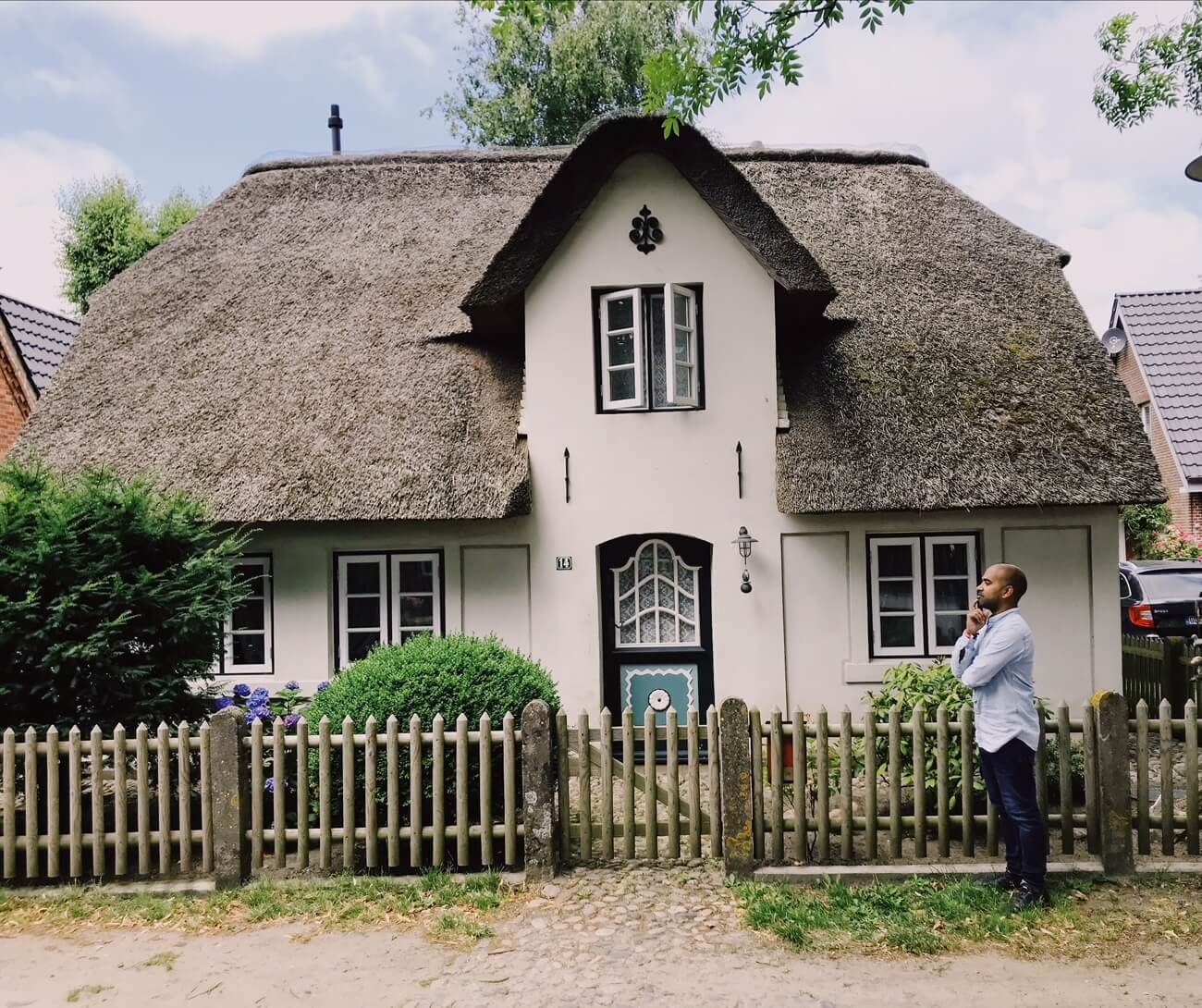
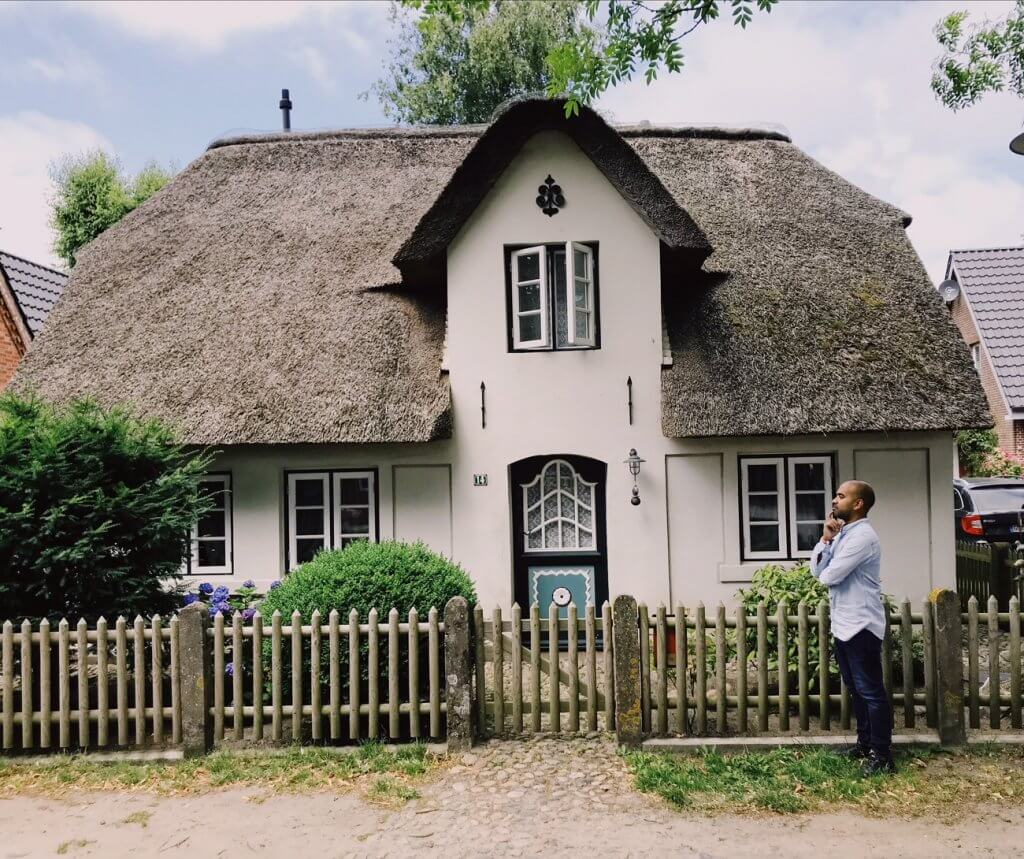
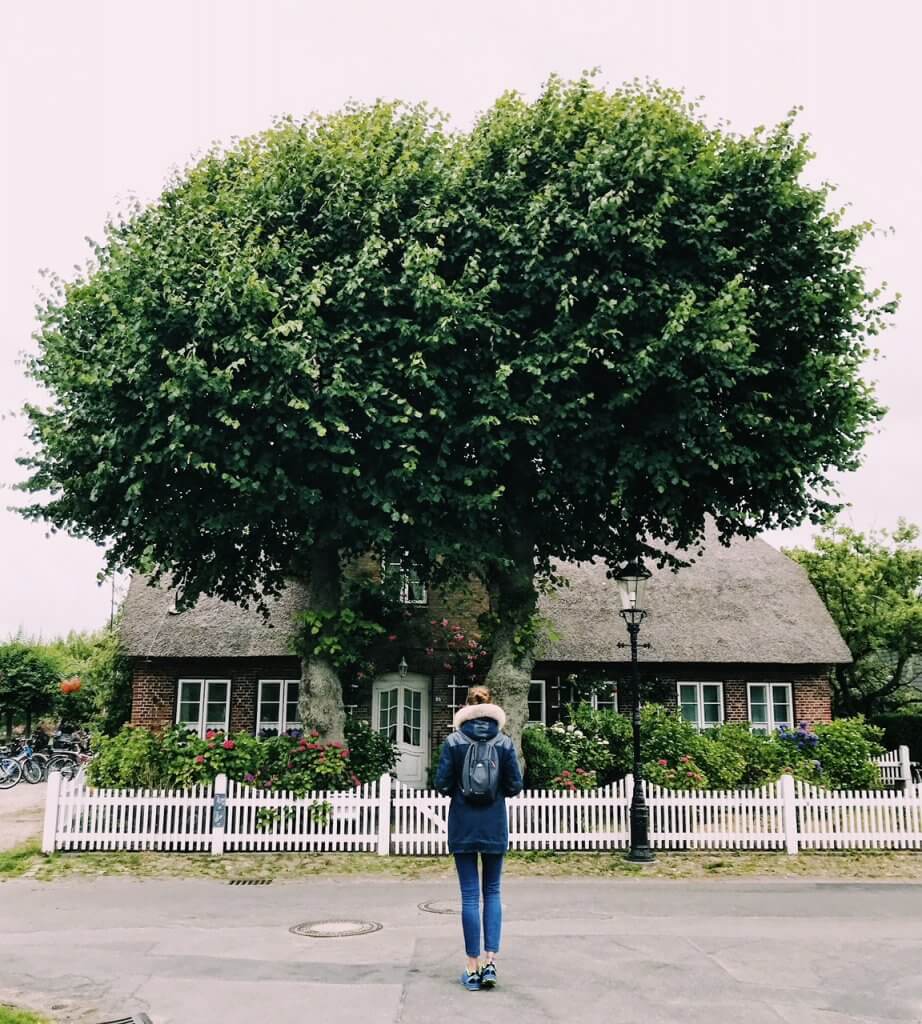
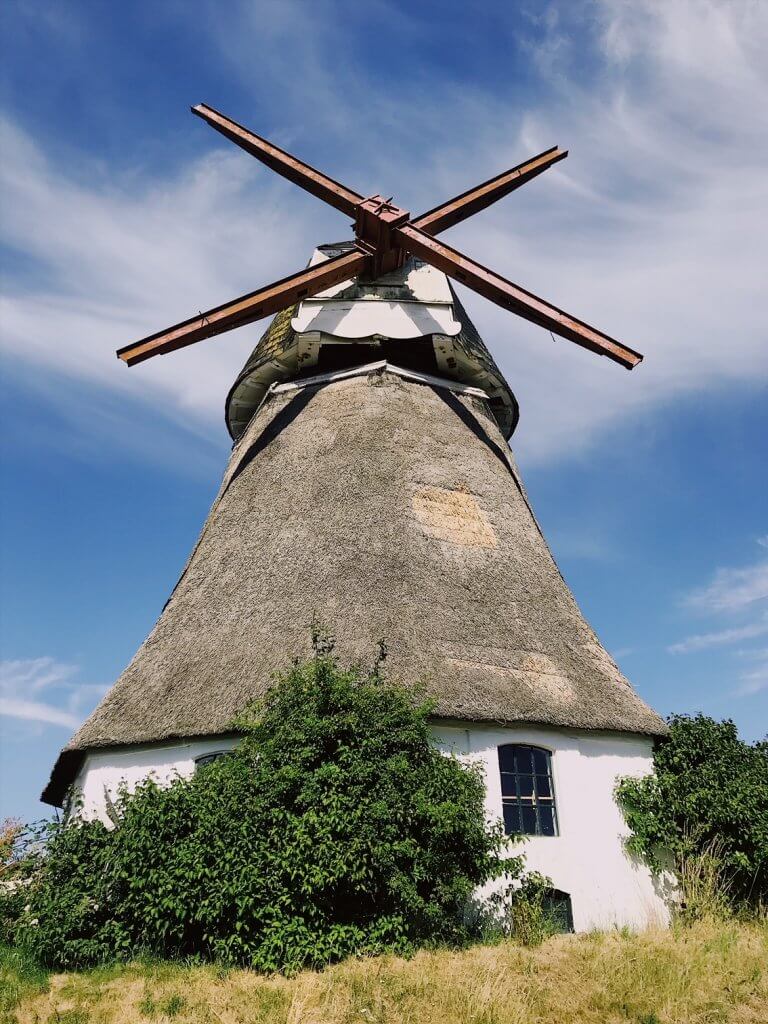
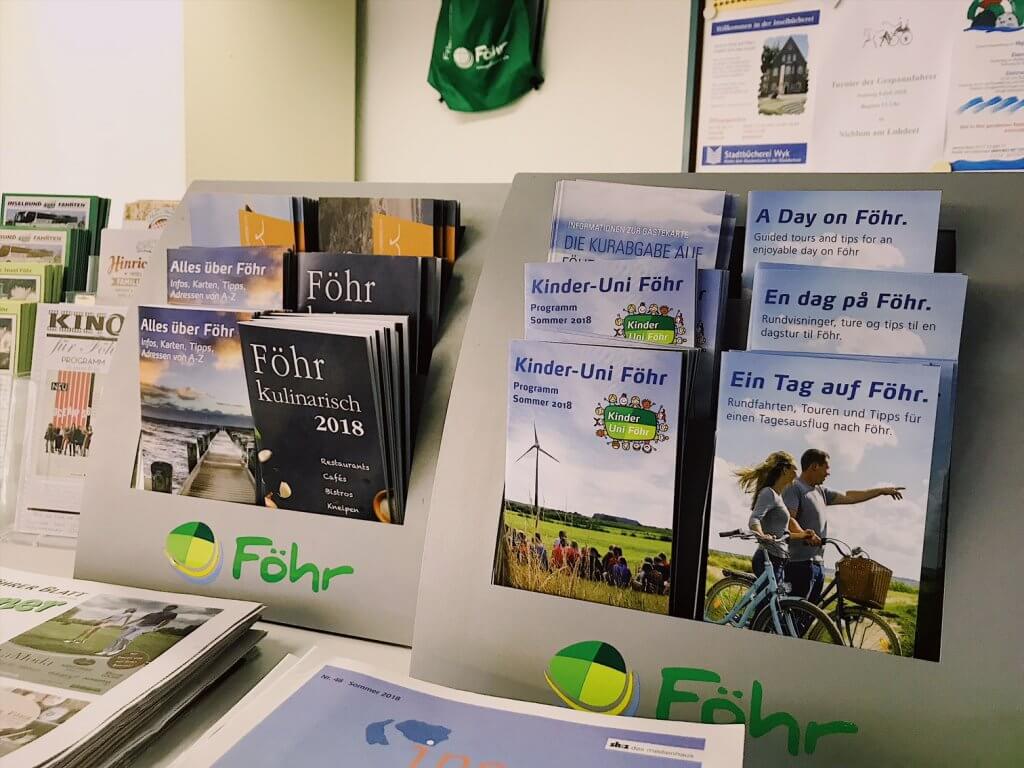
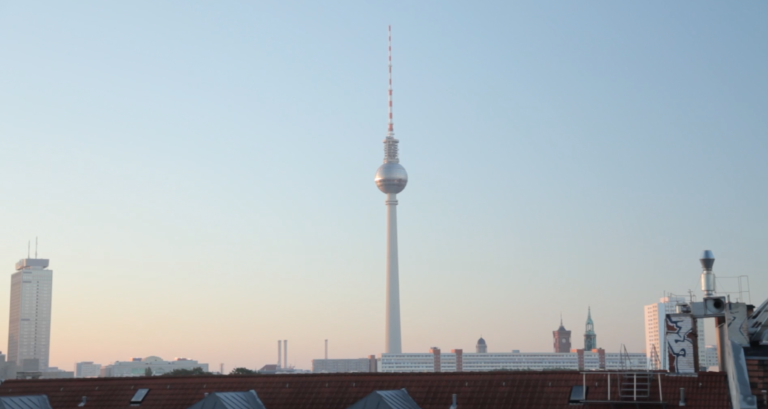
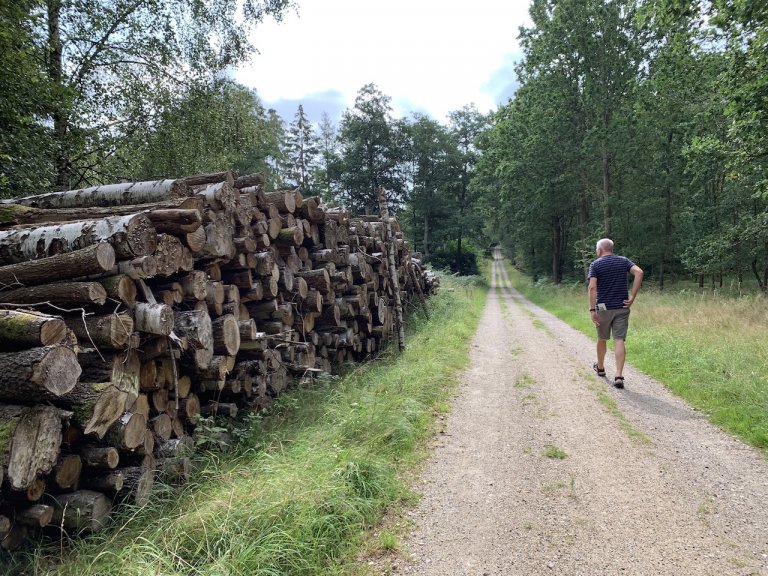
I’ve never heard of Fohr before and would love to visit it because of your post! The place looks so traditional and beautiful,